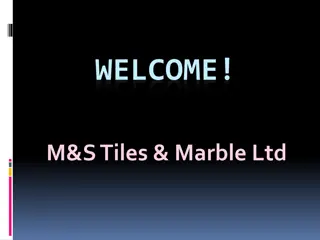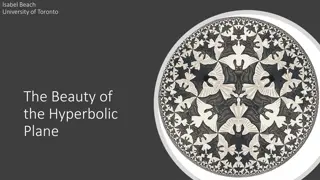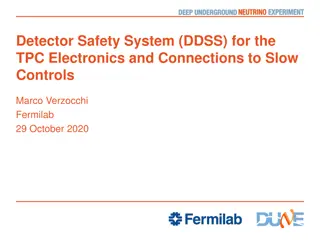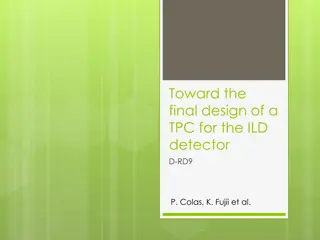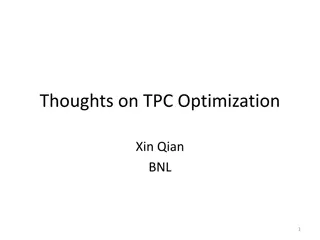Tiling of Pixel TPC and Read-Out: Solutions for Maximum Efficiency
In these images and descriptions, the tiling of the Pixel TPC for ILD by Peter Kluit is showcased. The Quad, with specific dimensions, forms the basic building block of the read-out. Various solutions are proposed to maximize the number of quads per row while avoiding insensitive areas at module edges. Simple and complex strategies are illustrated, highlighting areas of concern and optimization. The designs emphasize efficiency and coverage for effective data collection.
Download Presentation

Please find below an Image/Link to download the presentation.
The content on the website is provided AS IS for your information and personal use only. It may not be sold, licensed, or shared on other websites without obtaining consent from the author.If you encounter any issues during the download, it is possible that the publisher has removed the file from their server.
You are allowed to download the files provided on this website for personal or commercial use, subject to the condition that they are used lawfully. All files are the property of their respective owners.
The content on the website is provided AS IS for your information and personal use only. It may not be sold, licensed, or shared on other websites without obtaining consent from the author.
E N D
Presentation Transcript
Pixel TPC tiling for ILD Peter Kluit - Nikhef 11 september 2017 1
Tiling of the TPC read-out Basic building block is the quad - width 28.4 mm height = 39.6 mm Sensitive area width and height 2 x 256 x 0.055 mm New TPC dimensions Rin = 354 mm Rout = 1768.8-55 mm Nr. Of Modules in 8 (radial) rows 14, 18, 23, 28, 32, 37, 42, 46 2
Tiling of the TPC read-out Solving the maximum number of quads per quad row number in the module. Putting the quads on a straight line: Row 8 8 7 7 7 (8 large radius) Row 5,6,7 7 7 7 7 Row 4 ,3 7 7 7 6 Row 2 7 7 6 6 Row 1 7 6 6 5 R (row, height) phi (width) Most simple solution is just start tiling in the center and leave uncovered space at the module edges. Another solution is to leave no space at the edges and allow space between quad nr 6-5 nr 5-4 nr 4-3 nr 3-2 (quadrow bottom to top). This avoids an insensitive zone at the edge of a module. 3
Tiling of the TPC read-out Simple solution Insensitive areas In light blue Module edge 4
Tiling of the TPC read-out Simple solution Insensitive areas In light blue Module edge Green between two quads Purple inside quad (guard) 5
Tiling of the TPC read-out Complex solution Insensitive areas In light blue Module edge Green between two quads Purple inside quad (guard) 6



